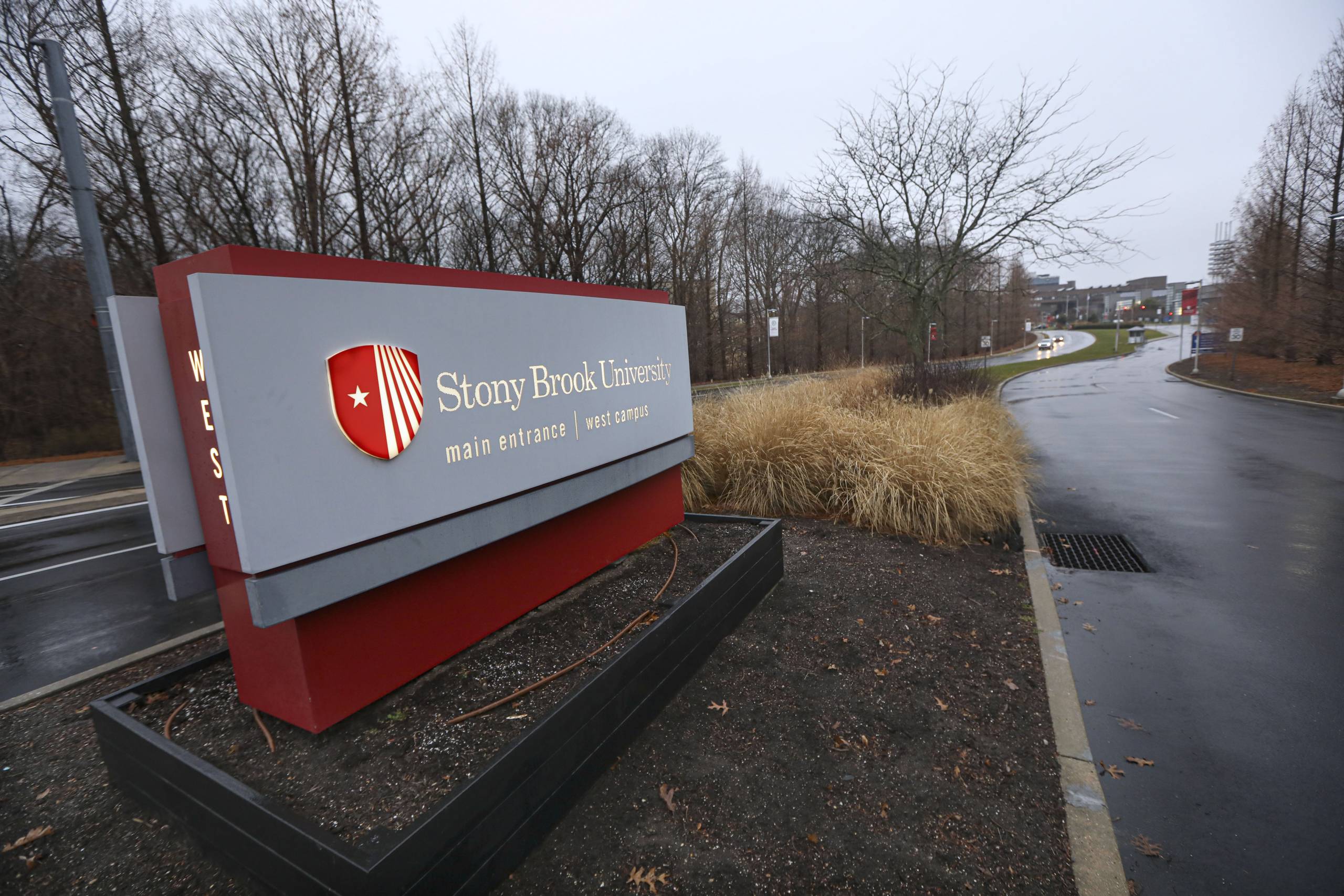This opinion column about climate solutions in higher ed was produced by The Hechinger Report, a nonprofit, independent news organization focused on inequality and innovation in education. Sign up for the Hechinger newsletter.
Climate change is here, now, lapping at the walls of higher education — quite literally.
Nathalie Saladrigas is an undergraduate at Miami Dade College, where her off-campus housing regularly floods. “You can’t even leave your car in the parking lot because it will get flooded — I mean up to your knees flooded,” she told me.
And 1,400 miles northeast, the campus of the State University of New York at Stony Brook has also flooded, thanks to Hurricane Ida, a 2021 storm strengthened by climate change that cut across the continent all the way from the Gulf Coast to the Northeast. Maurie McInnis, president of SUNY-Stony Brook, vividly remembers the stresses of that fall semester’s opening. “A big rainstorm, and all of a sudden we had to find beds for 400 students,” she said.
Higher ed is a massive, diverse sector with roughly 20 million students in the U.S. alone and a major physical and carbon footprint in all 50 states. Universities, for decades, have expanded society’s knowledge of climate impacts and climate solutions. But some leaders argue it’s time for these institutions to remake themselves wholesale for this rising tide of rapid change.
Two announcements last month indicate potential ways forward. SUNY-Stony Brook will anchor The New York Climate Exchange, a brand-new, $700 million campus on Governors Island in New York. And, This Is Planet Ed, an initiative of the Aspen Institute, launched a Higher Ed Climate Action Task force, uniting university leaders and other stakeholders like Saladrigas, a climate activist, to make recommendations for action across the sector. (Full disclosure, I’m a senior advisor to This Is Planet Ed.)

John King, the new chancellor of the State University of New York system as well as the co-chair of This Is Planet Ed, just appointed the system’s first-ever chief sustainability officer and executive director of climate action at SUNY. The appointment reflects King’s belief that colleges and universities can’t afford to engage with climate solely on an intellectual level, or as a narrowly focused topic in the sciences; they must also walk the walk, by rapidly decarbonizing their own infrastructure.
“It is my hope that more higher education systems will see SUNY’s efforts and recognize the potential for system-wide climate action, to reduce our emissions, prepare the clean workforce, advance equity and environmental justice, spur innovation, and empower the next generation to lead a sustainable future,” said King, a former secretary of education under President Barack Obama.
It’s quite a to-do list, but what does that look like on the ground? McInnis of Stony Brook has a vision. The New York Climate Exchange, she said, won’t put shovels to earth until 2025. But its leaders have already established a thriving matrix of partnerships among groups that don’t always naturally speak the same language — from fellow institutions like Georgia Tech, Pace University and Pratt Institute, to corporations like IBM, to environmental justice nonprofits like WE ACT in Harlem, to the New York State Iron Workers. Among other initiatives, the iron workers union will have input into a job-training program affiliated with the campus that will be readying the necessary workers to rip out thousands and thousands of oil- and natural gas-burning boilers, the better to convert New York City’s buildings to clean energy. In fact, green job trainees will, it’s planned, outnumber traditional students on the campus by 10 to 1.
One day, McInnis said, elementary school students will arrive by electric ferry for field trips, observing “living laboratories” that model “new ways of building, powering, treating coastlines.” Four hundred thousand square feet of buildings will be powered by clean energy with backup battery storage. The campus will capture and reuse gray water, and keep 95% of the trash it generates out of landfills. It will be filled with undergrads, grad students and professors from Stony Brook and partner institutions, some visiting for a “domestic study abroad.” And one day, she said, the campus will welcome leaders from around the world. “With time we hope to host major convenings of groups of other people who want to talk about climate change and how cities need to respond,” McInnis told me. “We want to be a global convener for the important conversations we all need to have on the most critical issue of our time.”

Every university president probably dreams of becoming a “global convener” in one way or another, and of winning $150 million in philanthropic funds to do so, as this initiative did. (The city will also contribute, but much of the projected $700 million price tag is still to be raised). But, it might seem a strange time for such boosterism, considering that enrollment in higher education is plummeting nationwide and is down 20 percent over the last decade at SUNY colleges and universities, half of which occurred during Covid.
Bryan Alexander is a higher education futurist whose latest book, Universities on Fire, is all about colleges’ responses to the climate crisis. He sounds a note of muted optimism around the New York Climate Exchange vision. “On the one hand it’s very exciting to see the state commit so much funding,” he said. Yet, he added, “the idea of starting a new campus from scratch is interesting and also very risky.” Especially in New York State, which, he noted, already has quite a bit of aging higher ed infrastructure, like McInnis’s flood-prone dorms back on Long Island, which date to the 1960s and 1970s.
Still, he said that universities have historically executed big cultural pivots by establishing greenfield campuses where new norms of collaboration, learning and knowledge production can be set forth. And when it comes to climate change, that’s exactly what’s required: “This is an all-hands-on-deck moment,” Alexander said. “This is a moment of civilizational transformation and we can’t be left out of it. Every aspect of academia gets to play a role.”
That was a common sentiment at the first This Is Planet Ed Higher Ed Task Force listening session in early May, presided over by Kim Hunter Reed, the commissioner of higher education for Louisiana, and Mildred García, the president of the American Association of State Colleges and Universities. Essentially two dueling messages emerged: It’s a really difficult time for higher education to take on a new, major, paradigm shift, what with funding crunches, political headwinds in red states, and post-Covid enrollment syndrome; and, there’s no choice but to act big and fast.
Students are certainly contributing to that sense of urgency. A great deal of climate action at universities has been driven by student activism. And students today see climate as joined with other urgent struggles for justice. “As a low income person of color, I know a lot of communities like mine are directly impacted by climate change,” said Saladrigas. “It’s a lot of intersectional issues. And learning about climate change is inaccessible.”
To Saladrigas, the political environment in Florida feels particularly discouraging to climate learning; she plans to transfer out of state as soon as she can. “If you don’t have resources,” she said, “you can’t allow for students to learn more about how to make a change.”
This opinion column about climate solutions in higher ed was produced by The Hechinger Report, a nonprofit, independent news organization focused on inequality and innovation in education. Sign up for the Hechinger newsletter.